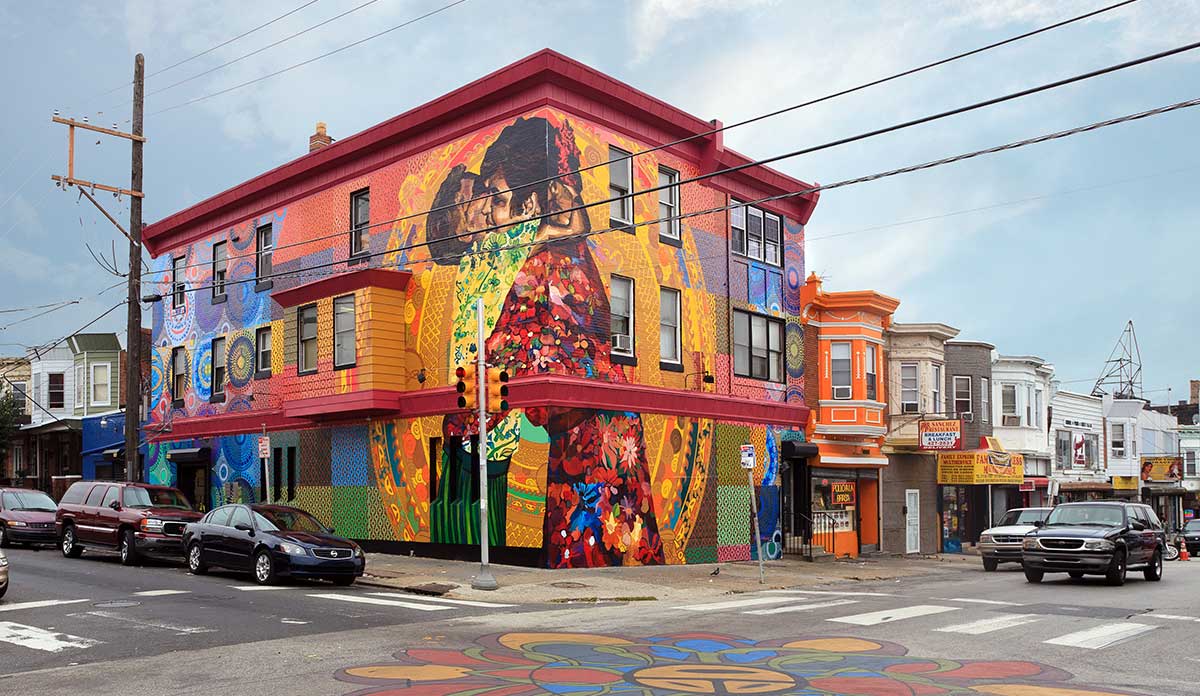By Maggie Thomas
March 3, 2017
Can we really afford public art? Can we justify spending on art when so many public needs are underfunded? There has long been support for public investment in art despite the opacity of its impact on people and communities. Studies are increasingly demonstrating the concrete positive, public health benefits of public art.
Key forms of public art linked to better health include art installations in medical facilities, community involvement in creating public art, and art rooted and displayed in community spaces to strengthen and create solidarity.
The health benefits of public art in medical facilities are most easily measured, as patients are an identified population and are already being assessed for health outcomes. The range and impact of art in medical facilities is compelling evidence of the health-promoting role art can play . Patients in hospitals have been found to experience less anxiety, lower levels of pain, and faster healing after medical procedures when their hospital surroundings incorporated various forms of art. Medical facilities have dawn on research which explores the impact of the content of art as well as its simple presence, leading to emphasis on uplifting and representational images, art which depicts and reflects nature, and attention to a diverse array of art forms and content. These choices can support the potential for hospital-based public art to motivate patients to leave their rooms and engage in the facility, establish hopeful expectations about treatment, and generally improve self-reported mood and stress.
Public art developed and installed in community spaces can impact community health in multiple ways. Much of this is participatory public art, which engages community members in the planning and creation of the art itself.
The health impact of community-engaged and community-based public art is more complex to measure in terms of health impact, but what we do know from evaluation projects is exciting and encouraging. Public art developed and installed in community spaces can impact community health in multiple ways. Much of this is participatory public art, which engages community members in the planning and creation of the art itself. Projects like Power House Productions, in Detroit, can increase community members’ sense of identity and belonging, reducing isolation and negative mental health and emotional health outcomes.
Some participatory public art projects intentionally engage community members with differences, such as Philadelphia’s Mural Arts Porch Light Program, which actively includes people with behavioral health challenges in community groups creating public mural art. That program’s evaluation study found public health benefits ranging from improved neighborhood safety to decreased stigma around mental health issues to increased innovation in designing substance abuse treatment programs.
Marsaili Cameron and colleagues note that arts communities and public health communities share a dedication to improving individual and community well-being. This common goal highlights the nexus at which public art impacts public health. Public art’s ability to decrease stress, elicit awe, develop shared identity, reinforce self-efficacy, and promote positive health behaviorsare clear public health impacts. That these impacts are stronger with strong creative engagement, as an initiative evaluation in London found, emphasizes the importance of the holistic, aesthetic impact of public art as opposed to other forms of public engagement.
Public art with public health impacts takes many forms, from a contemporary art collection at the Cleveland Clinic, reducing patients’ stress, to a gorgeous drinking fountain in New York City’s Washington Heights neighborhood, emphasizing cultural identity. Public art has real public health benefits, transmitted at the community level. As such, the public sector has an essential role to play in supporting public art for the well-being of all citizens.
In the subsequent article Paying for Public Art, PHP explores what government, non-profit, and other organizations are doing to fund public art.
Feature Image: It Has to be From Here: Forgotten but Unshaken © 2012 City of Philadelphia Mural Arts Program / Betsy Casañas. 3263 North Front Street. Photo by Steve Weinik. Courtesy of Mural Arts Philadelphia. About the project: “The mural represents a partnership between Mural Arts, APM, and the Department of Behavioral Health and Intellectual disAbility Services. The mural depicts the strength and resilience of the APM community as well as the importance of APM as an anchor in the community.”

